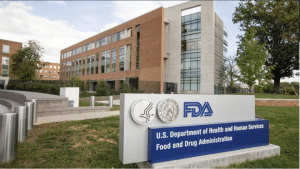 The pharmaceutical and biologics industry recently received updated FDA guidance on the use of Generally Accepted Scientific Knowledge (GASK) in regulatory submissions.
The pharmaceutical and biologics industry recently received updated FDA guidance on the use of Generally Accepted Scientific Knowledge (GASK) in regulatory submissions.
The FDA guidance provides new examples of when it is applicable to leverage GASK data to meet safety requirements required in a new drug application. Clinical information in the drug discovery data that supports the nonclinical safety of a drug can contain GASK citations. Additionally, the citations would be based on existing clinical studies that have been validated by FDA in approved products on the market.
What is GASK?
Generally Accepted Scientific Knowledge refers to information and methods widely considered as accepted by life science industry experts. It can include established scientific principles, published papers, and best practices that have passed the regulatory scrutiny of drug development. GASK is most often utilized during the evaluation of safety and efficacy data of regulated products.
FDA Approval
The FDA guidance elaborates on the process of FDA regulators and how new drug applications are evaluated. Further, the FDA often requires life science companies to provide a significant amount of regulatory data to support safety and efficacy claims.
This regulatory clinical research often comes from clinical trials, preclinical studies, and other types of scientific data sources. However, in scenarios where there may be limited clinical trial data conducted, GASK can be used to provide supporting documentation for regulatory compliance.
Drug Development
Life science companies are required to offer nonclinical information to support regulatory approval of a New Drug Application (NDA) or Biologics License Application (BLA). Additionally, the FDA guidance elaborates on how nonclinical information helps the Agency focus on important matters, such as:
- Identifying pharmacological effects, including the mechanism of action of the drug in vitro and/or in vivo
- Identifying absorption, distribution, metabolism, and excretion of the drug in vitro and/or in animals
- Identifying possible consequences of exposure duration (e.g., chronic)
- Identifying risks for special populations (e.g., pediatrics)
Regulation Examples
The FDA guidance goes on to describe unique conditions in which sponsors have successfully used GASK in their product development program. Each sponsor cited these GASK resources to meet FDA’s regulatory approval requirements instead of conducting certain nonclinical studies:
- Products containing a substance that naturally occurs in the body. Sponsors submitted GASK regarding that substance and the known effects on biological processes.
- Demonstrated drug impact on a particular biological pathway. Sponsors submitted GASK regarding the impact and FDA regulators concluded specific nonclinical studies were not necessary to support drug approval and drug labeling.
Active Ingredient
The FDA guidance continues by listing examples of substances that are typically present in a healthy human body. For example, endogenous substances where the drug replaces a substance that should naturally be present but, for pathological reasons, a patient may lack sufficient amounts. The FDA approved drug may enable and help accelerate the proper functioning of the human body.
Pharmacological
Additionally, a key driver of using GASK for FDA approval is the patient who has been prescribed a drug & the pharmacological impact experienced. Existing human pharmacokinetic studies and toxicology studies are recommended and may support the approval of the regulatory application. Specifically, regulators wil look to examine if the drug helps increase the level of the endogenous substance to the level of a healthy individual.
Diet
Further, exogenous substances that are already present in a patient’s diet may help expedite U.S. Food and Drug Administration approval. This scenario includes a patient’s exposure to an unmodified food substance that doesn’t exceed typical levels of dietary exposure when the drug is taken orally. The FDA guidance also states that certain nonclinical studies may be unnecessary based on the relevance of the exogenous substance to the clinical research submitted.
New Drug Application
If an FDA sponsor utilizes GASK information in their new product application, they must submit justification in the appropriate regulatory submission filing (e.g. BLA submission, 510(k) submission, etc.). The FDA guidance recommends as early as possible in product development to the assigned FDA regulator.
Finally, food and drug regulation feedback would be provided to the sponsor for the proposed regulatory strategy for approval. The FDA submission should incorporate evidence for the use of GASK, including textbook excerpts and/or non-product-specific published literature.


